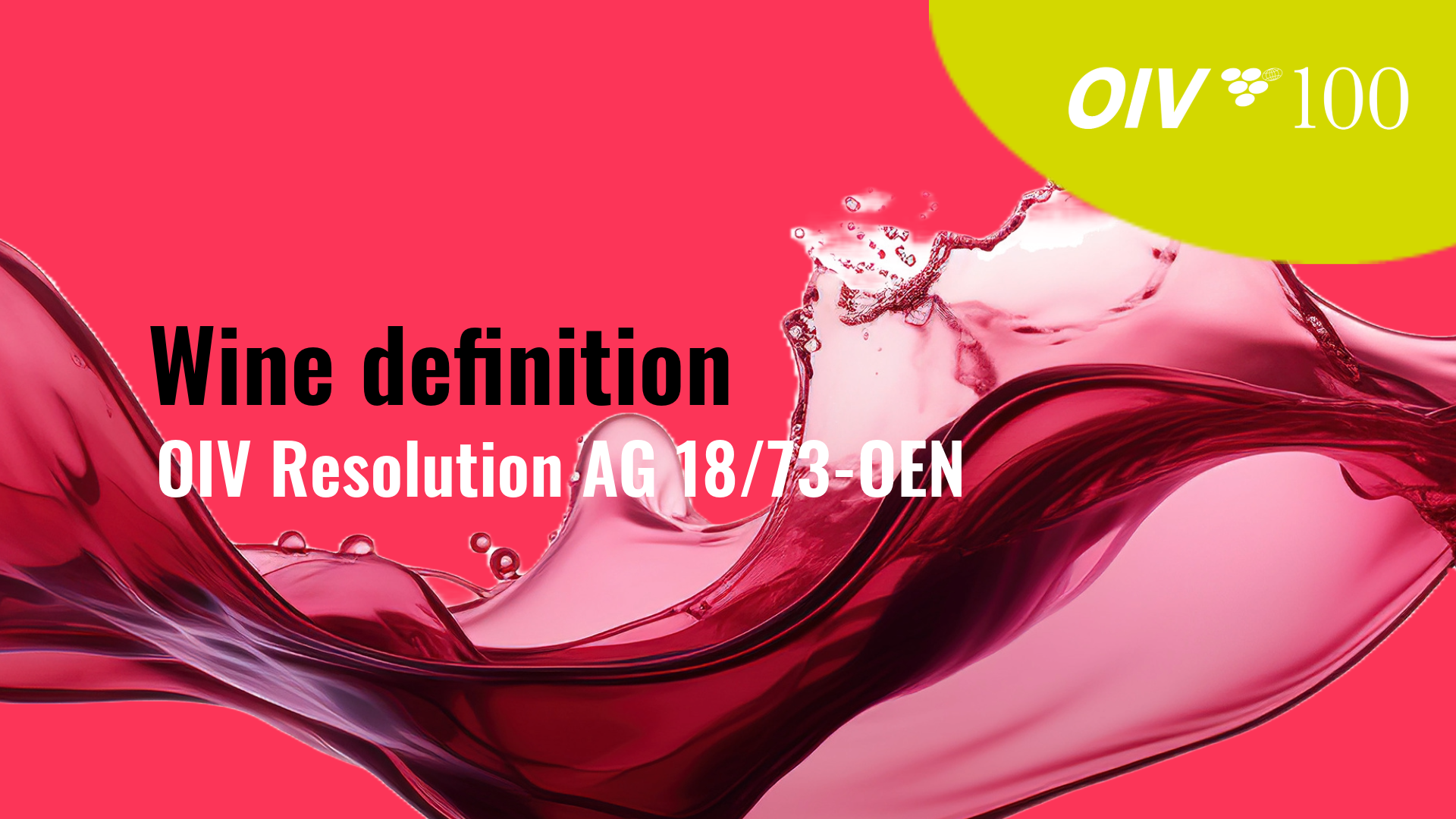The International Organisation of Vine and Wine (OIV) celebrates its 100 years, marking a century of contributions to the vine and wine sector. It is through its resolutions that the OIV plays a fundamental role in the sector.
In this centenary year, we will be highlighting 12 resolutions. Each month, we will bring to light an OIV resolution that has left its mark on the vitivinicultural scene.
What better way to start than with the OIV’s reference resolution:
The definition of wine?
Origin
The International Organisation of Vine and Wine (OIV) was created in 1924 to address the challenges facing the wine-producing sector at the time, notably Prohibition and unfair competition between wines produced from fresh grapes and artificial wines, particularly those produced from dried grapes.
Wine definition: from first steps to recognition
Conscious of this imbalance and of these misleading aspects, the OIV adopted a definition of wine in its first resolutions: "nul autre produit que celui qui provient de la fermentation alcoolique du jus de raisin frais, ne puisse recevoir l’appellation vin"1 (only in French in the original text)/ ”no product other than that resulting from the alcoholic fermentation of fresh grape juice may be given the appellation wine”.
Nevertheless, the original resolution of 1928 was firstly a wish. The OIV’s definition of wine was officially established in 1973. From this date, "wine is the beverage resulting exclusively from the partial or complete alcoholic fermentation of fresh grapes, whether crushed or not, or of grape must. Its actual alcohol content shall not be less than 8.5% vol."2.
Additionally, by this definition of wine, the words « alcoholic fermentation » provide legitimate recognition for all oenological practices and processes whose purpose is to ensure alcoholic fermentation and prevent alteration of the wine3 .


The OIV definition of wine in practice
By definition, OIV resolutions are not mandatory. However, given its role as a scientific and technical reference, OIV resolutions have influenced the world vine and wine sector, and in some cases, have served as a reference for national regulations. For instance, Lebanon, in 20004, adopted the OIV’s definitions of musts and types of wine in a legislative act.
In the same sense, the European Union is inspired by the OIV definition for its definition of wine within the European regulations5 which is applied to the 27 Member States of the European Union.
Moreover, some non-OIV Member States also refer to the definition of wine adopted by the OIV, as it is the case with the People’s Republic of China through Standard G15037-20066.
At the international level, the OIV is recognised for its work, in particular for its products’ definitions7. The Codex Alimentarius refers to the OIV Code of Oenological Practices in its descriptors.
Finally, the definition of wine doesn’t apply exclusively to a single product, it also legitimises the use of oenological processes in its winemaking.
Moreover, recognition of the OIV by the Codex Alimentarius is fundamental to ensuring consumer health and guaranteeing trade without technical obstacles. Consequently, these various recognitions contribute to the creation of a coherent regulatory environment that promotes harmony and cooperation within the wine sector.
1 C 2/28-OEN Définition de l’appellation vin/ Définition of appellation wine
2 AG 18/73-OEN Update of the codified files of the Code of technological treatments for vine products
3 P. RAILHAC, L’Office international du vin, 1928, p.57
4 Law n°216 of 30 May 2000 (Lebanon)
5 R(EU) n°1308/2013, Annex VII Part II 1. « « Wine » means the product obtained exclusively from the total or partial alcoholic fermentation of fresh grapes, whether or not crushed, or of grape must ».
6 Standard G15037-2016, point 3.1 « refers to fermented wines that have fresh grapes or grape juice as raw material, are made through full or partial fermentation, and contain a certain degree of alcohol content.”
7 CAC/41 INF/8 Joint FAO/OMS Food Standards Programme, Codex Alimentarius Commission, 41st session, 2-6 July 2018 in Roma (Italy).